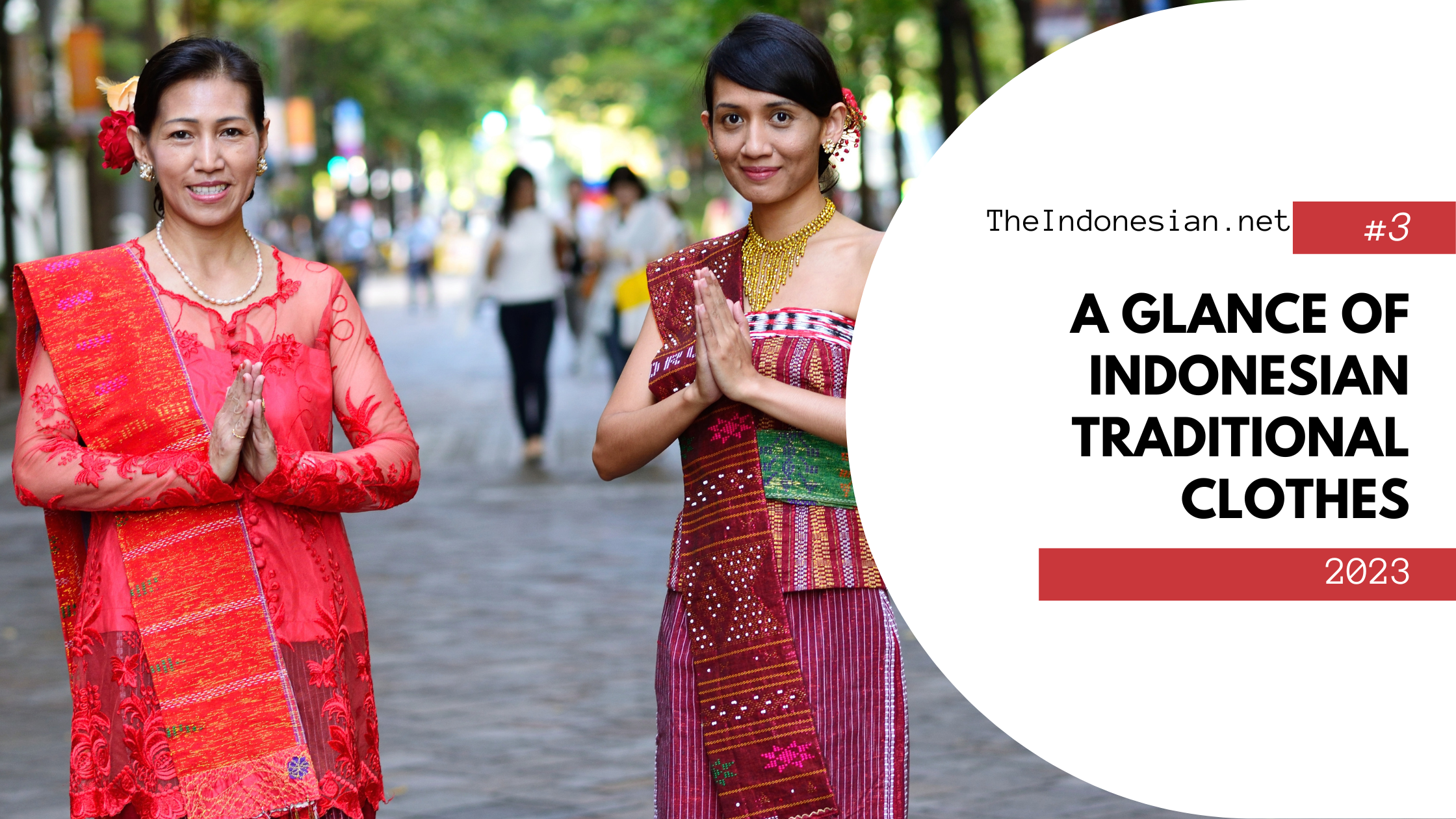A Glance of Indonesian Traditional Clothes
Indonesia is a culturally diverse country, and one of the best ways to explore this diversity is through traditional clothing. Traditional clothing in Indonesia varies significantly from one region to another, with each region having its own unique style and cultural significance. Indonesian traditional clothes are worn for special occasions and as a form of everyday clothing, especially in rural areas.
Indonesian traditional clothes are known for their vibrant colors, intricate designs, and the use of natural fibers like cotton, silk, and woven fabrics. These fabrics are often decorated with batik patterns, embroidery, or beadwork, which reflect the rich history and cultural heritage of the country. So, let’s take a peek at the 5 most famous traditional clothes in Indonesia.
1. Kebaya
One of the most popular traditional clothes in Indonesia is the kebaya. A kebaya is a traditional blouse worn by women in Indonesia, often paired with a long skirt or sarong. Kebayas are made of silk or cotton and are typically adorned with intricate embroidery or lacework.
They come in various colors and designs, each with its own significance. Kebayas are commonly worn for weddings, formal events, or even casual outfits.
2. Batik
Another popular traditional clothing in Indonesia is the batik. Batik is a fabric dyeing technique that involves applying wax to the fabric before dyeing it. The wax resists the dye, creating intricate patterns and designs.
Batik is used to make a variety of traditional clothing, including sarongs, shirts, and dresses. The patterns on batik fabric often have cultural or symbolic meanings and are specific to certain regions of Indonesia. In Java, people also commonly wear batik shirts and a sarong. The sarong is usually made of silk or cotton, and the batik shirt is decorated with intricate patterns and designs. The Javanese traditional costume is commonly worn for formal events such as weddings or religious ceremonies.
3. Baju Kurung
In the western part of Indonesia, the traditional clothing is called baju kurung, which consists of a long blouse and a long skirt. The blouse is usually decorated with embroidery or lacework, and the skirt is often made of silk or cotton. The baju kurung is commonly worn by women in formal events or as an everyday outfit.
4. Ulos
In Sumatra, the traditional clothing is called ulos, which is a woven fabric made from cotton or silk. The ulos are typically used to make traditional clothing such as a kebaya, a sarong, or a shawl. The ulos are often decorated with geometric patterns and symbolic motifs, each with its own cultural significance.
5. Pua Kumbu
The traditional clothing of the Dayak people in Borneo Island is made from natural materials such as bark, cotton, and silk. The clothing is often decorated with intricate patterns and designs that have symbolic meaning for the Dayak people.
One of the most iconic pieces of traditional clothing for the Dayak people is the “pua kumbu” or “ikat weaving.” This is a traditional cloth made from hand-woven cotton or silk threads that are tied and dyed to create intricate designs. The pua kumbu is often used as ceremonial cloth for important events such as weddings, funerals, and traditional rituals.
The Dayak people also wear other traditional clothes such as the “tanggui” and “pantun.” The tanggui is a traditional Dayak blouse that is usually made of cotton or silk and decorated with intricate embroidery. The pantun is a traditional skirt that is made of bark cloth or woven cotton and is usually decorated with traditional patterns and designs.
In conclusion, Indonesian traditional clothes are a reflection of the country’s diverse culture and rich heritage. Each region has its own unique style and cultural significance, and traditional clothing is an important part of daily life in many parts of Indonesia. The intricate patterns and designs on traditional clothing reflect the country’s history and traditions, making it a valuable part of Indonesia’s cultural heritage.

